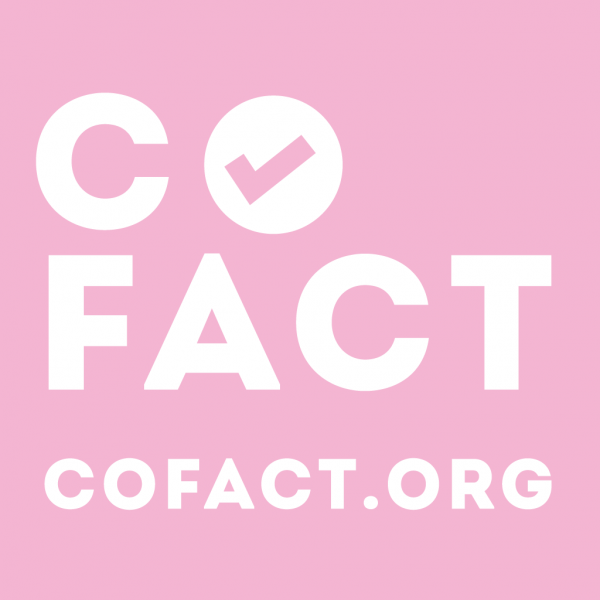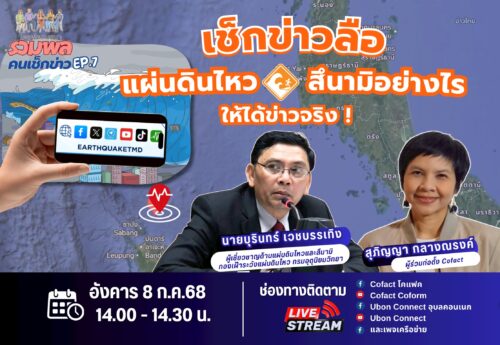Thailand–Cambodia Border Conflict: ‘Information Warfare’ Sparks Concerns Over People Sharing False but Appealing Content
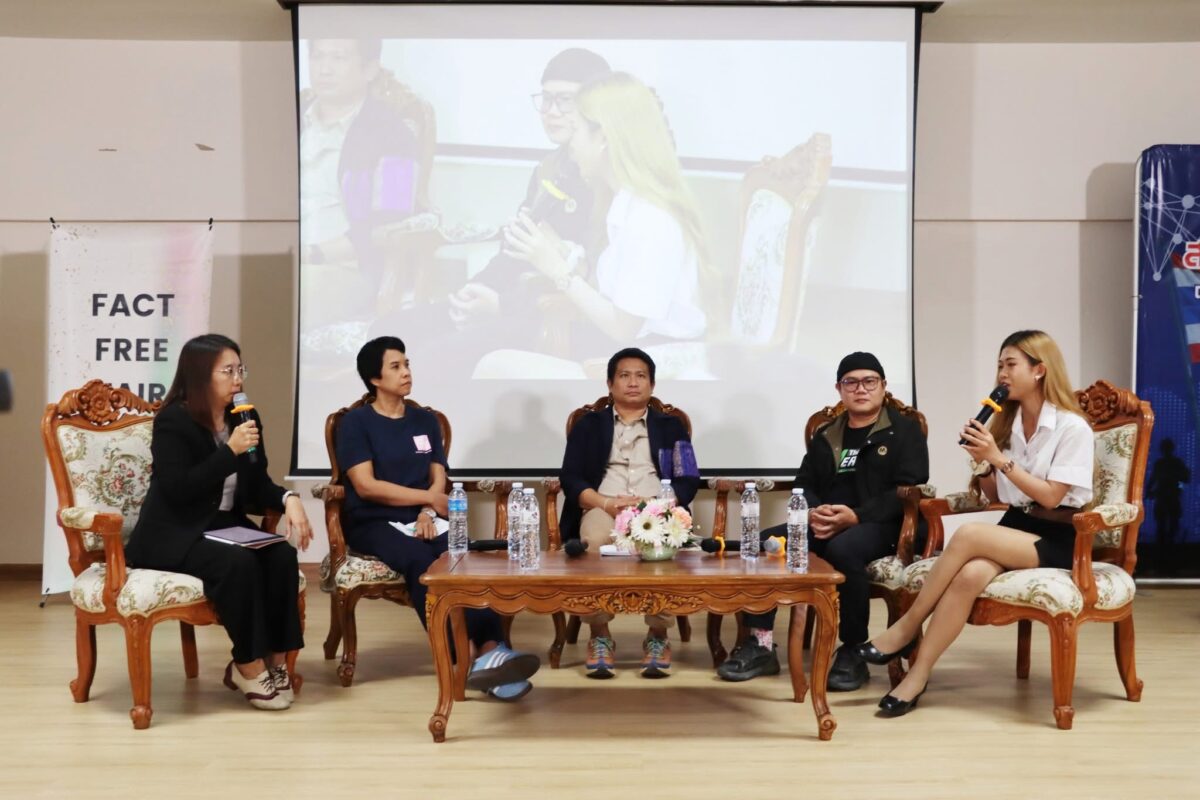
On September 17, 2025, the Cofact (Thailand) Coalition, in partnership with the Faculty of Humanities and Social Sciences at Burapha University, the Thai Health Promotion Foundation (ThaiHealth – SSS), the National Press Council of Thailand, ChangeFusion Institute, the Friedrich Naumann Foundation (Thailand), the Centre for Humanitarian Dialogue (HD), Tratpost News, The Reporters, and ThaiPBS, organized the 29th Digital Thinkers Forum (Regional #1/2568) on the topic “Information Warfare and Online Battlefronts: Lessons Learned from Journalism of Truth in the Thailand-Cambodia Border Conflict Case” at the Pibulsongkram Room, 60th Anniversary of Her Majesty the Queen Building 2, Faculty of Humanities and Social Sciences, Burapha University, Chonburi Province.
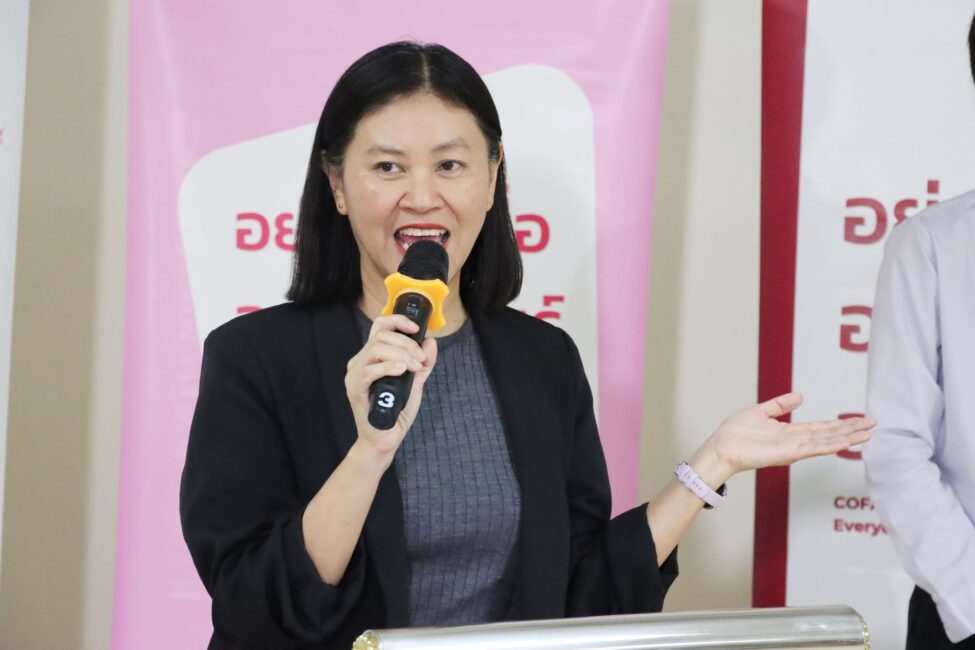
Assoc. Prof. Dr. Suchada Pongkittiwiboon, Dean of the Faculty of Humanities and Social Sciences at Burapha University, said that the Thailand-Cambodia border phenomenon might seem distant from Burapha University, but the information and news we receive make it feel close because it penetrates and follows us everywhere. Therefore, we will learn from the information warfare phenomenon and how to adapt ourselves to live in a digital society where information comes from many directions.
“This forum represents important cooperation between higher education institutions and relevant agencies in creating a learning society together to become media literate, preparing ourselves to coexist well with digital society. I think this forum will be an opportunity for us to exchange and learn, sharing experiences from various sectors. I believe we will gain perspectives and useful information for continuing to drive this work forward,” Assoc. Prof. Dr. Suchada stated.
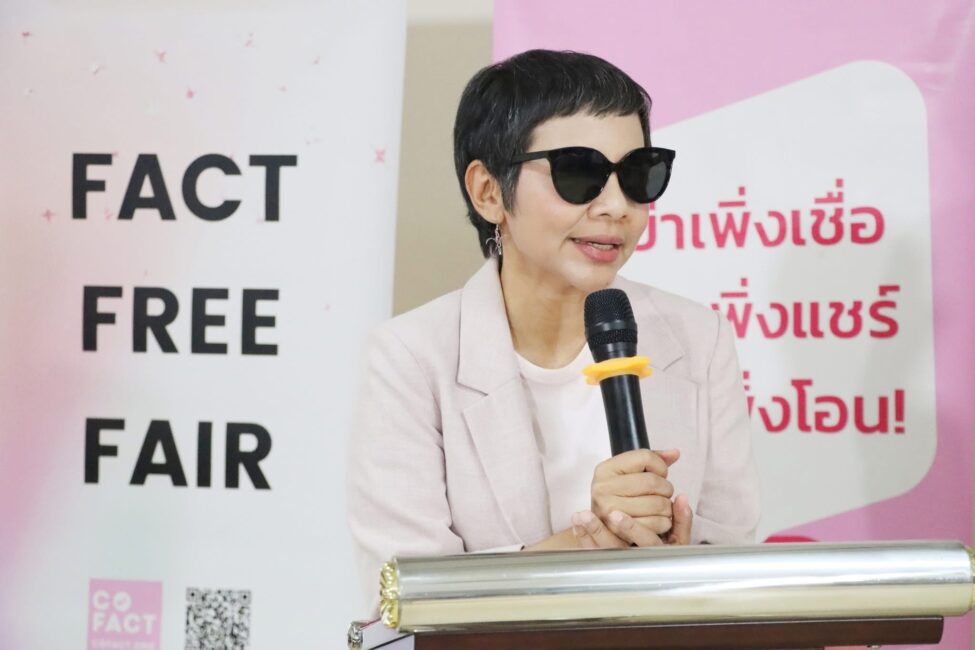
Supinya Klangnarong, Co-founder of Cofact (Thailand) Coalition, said that even though we have conflicts, it would be difficult to move land or homes away from each other. Ultimately, there should be a way to return to coexisting. However, from the past conflict, the fighting wasn’t just between armies or soldiers, but there was also an intense online battlefield from both countries. Online warriors formed quickly and performed their roles, both organically and seemingly with preparation, or Information Operations (IO), along with the use of Artificial Intelligence (AI) technology to create fake images and voices (Deepfake), resulting in images or video clips that many people might be misled into believing.
“It’s not just the Thailand-Cambodia conflict. We’ve seen conflicts and wars breaking out everywhere around the world, and what follows from global phenomena is the same: Information Warfare filled with both real and fake news. Everyone must be very mindful of what to believe. But what’s more important is that many things have been fact-checked, but people still choose to believe according to their own preferences, trying to overlook the evidence, not wanting to think it’s untrue because it responds to our ideology,” Supinya said.
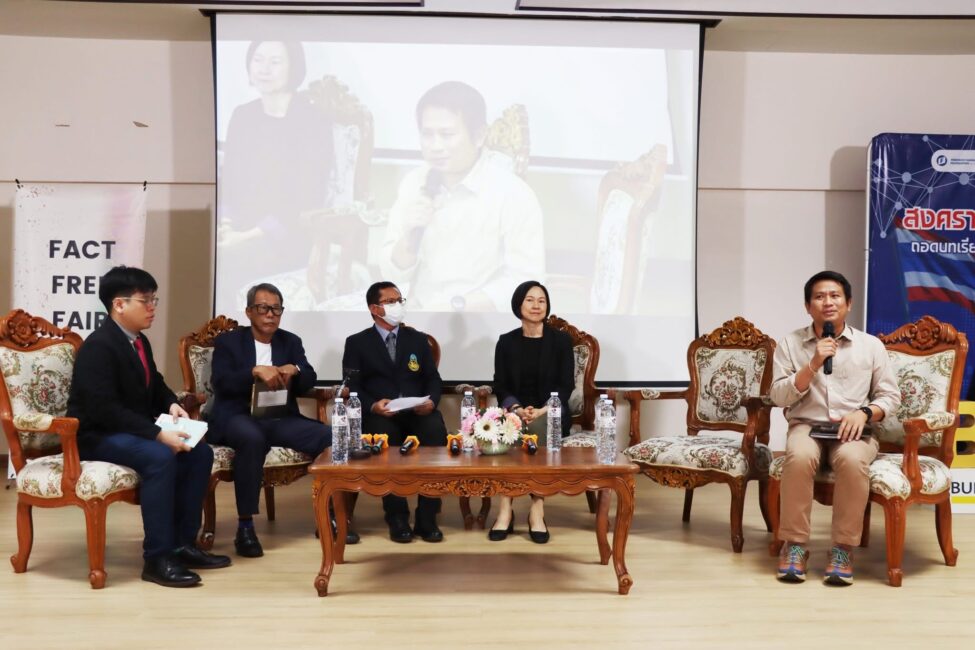
The subsequent seminar featured a panel discussion, “Information Warfare and Online Battlefronts: Lessons Learned from Journalism of Truth in the Thailand-Cambodia Border Conflict Case,” with 5 speakers. Dr. Wasin Pantong, a lecturer in the Department of Politics and Government, Faculty of Political Science, Thammasat University, explained the fake news phenomenon, categorizing it into:
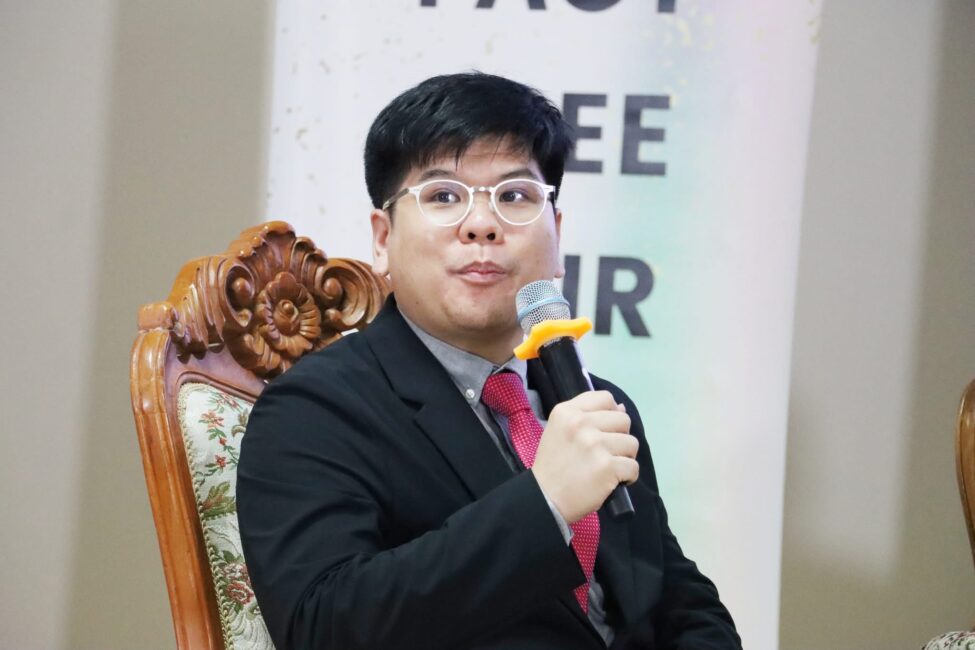
1. Format: Including “Targeted” communication, sending messages specifically to certain target groups, such as ethnic groups, groups with specific political ideologies, or age groups, and “General” communication, disseminated without targeting specific groups.
2. Channels: Commonly found on social media platforms, both public and closed groups. In closed groups, fake news is created to align with the group’s beliefs, making them believe even more deeply. Also found in messaging applications, video sharing platforms where AI is used to create videos that seem real but aren’t, and websites and blogs, which despite being information channels from the 2000s decade (2000-2009), are still seen to some extent today.
“If we categorize them into groups, we see 3 types of disinformation: 1. Text-Based Disinformation, 2. Video-Based Disinformation, and 3. Image-Based Disinformation. I would put these three in overlapping circles because sometimes one piece of disinformation might combine all three, or maybe 2 out of 3. Mostly, from what I’ve encountered, they use all three simultaneously,” Dr. Wasin stated.
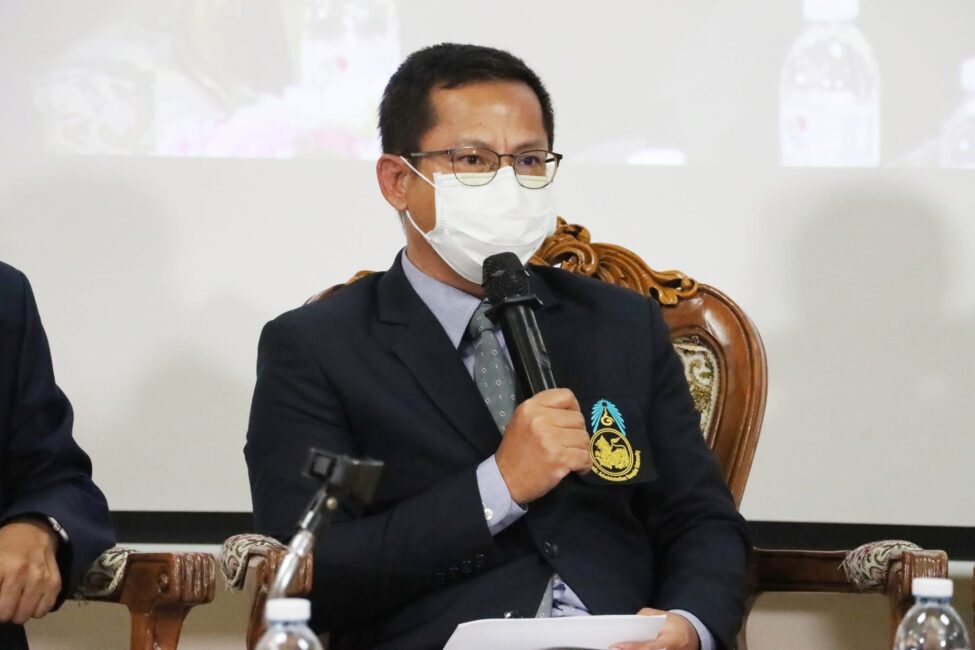
Somkid Petchprasert, a lecturer in the Department of Public Administration, Faculty of Political Science and Law, Burapha University, discussed the audience’s perspective on dealing with rumors or propaganda. He said this ultimately creates a state of confusion in filtering information about what’s real or fake. But human nature has what’s called “Confirmation Bias.” For example, having grown up in the Thailand-Cambodia border area, understanding the Khmer language and being familiar with Cambodians, when receiving negative news about Cambodia, it reinforces existing beliefs.
For instance, there’s a saying, “Khmer can’t be trusted after they’re full,” meaning Cambodians ask for food from Thai people, but once they’re satisfied, they can no longer be trusted. This saying is a form of bias that might make us prejudge. When we choose to receive information, we might select what confirms our biases. As the Thai saying goes, “A dog doesn’t defecate without a reason” – information might have only 10% facts, with the rest being embellishment, but receivers choose to believe it first. This is the misfortune of people in the current era. And don’t think that Thai information or media is an “Open Gateway” while Cambodia is a “Single Gateway,” so all Thai information would be trustworthy. Receivers must be aware.
“With online communication, anyone can be a reporter. The problem is that when people haven’t learned about ethical principles and responsibility regarding information, coupled with revenue from going viral, it becomes quite an issue. If we look at the information system, it makes people prone to being easily manipulated. In the back-and-forth manipulation, sometimes it causes quarrels. Suppose Liverpool fans stir up Manchester United fans (English football teams), they fight. Not to mention Thailand and Cambodia. Even though we’ve never been to Manchester or Liverpool, we can still fight here,” Somkid said.
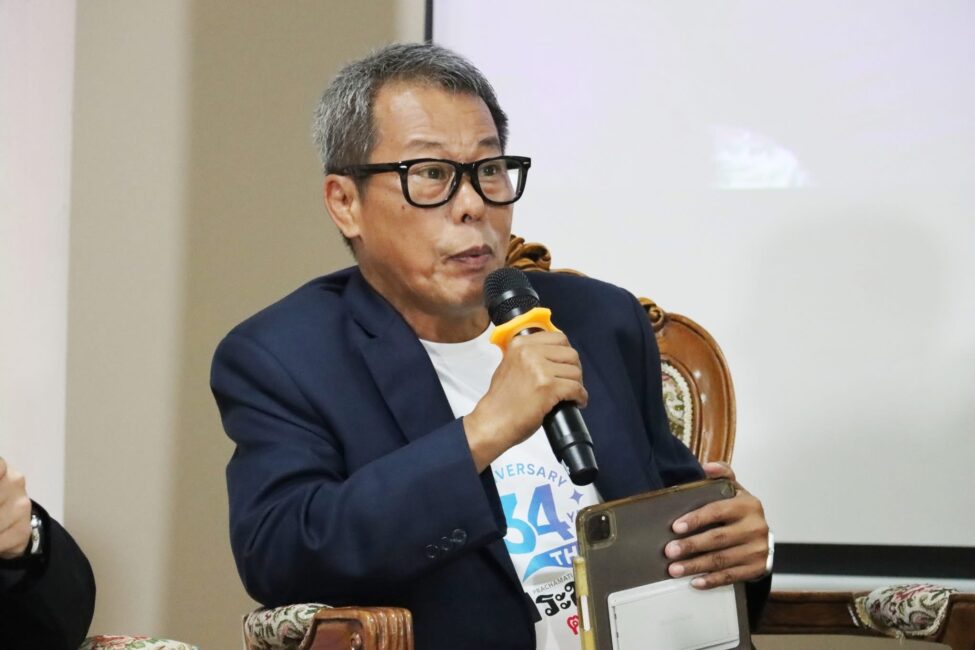
Jakkrit Waewklaihong, President of Trat Province Journalists Association, raised concerns about “journalists taking sides,” often labeled as being with this or that group. When the government changes, they present negative information. For example, they spread news so aggressively that it suggested Koh Kood belongs to Cambodia, leading to “vocational student group for the monarchy” conducting activities in Trat Province, with ministers who had never visited Trat Province showing interest in visiting Koh Kood. However, the villagers on Koh Kood know quite well that Koh Kood belongs to Thailand.
He questioned whether the problem lay in the Thai government making agreements related to personal interests, such as oil and natural gas. Villagers do not understand the 1:50,000 or 1:200,000 maps, but the people of Koh Kood and Trat Province know that Koh Kood belongs to Thailand. Today, the stream of information warfare and counter-information is so constant that it’s impossible to know what is true and what isn’t. He admitted he had made mistakes, perhaps due to insufficient data collection.
“Information warfare isn’t over yet, and it’s information warfare where we can’t tell – there might be much more fake news than truth. It’s all mixed up, so what do we do? Cofact is one organization that aims to fact-check using various methods. AFP (French news agency) is another agency doing this. Even the DE (Ministry of Digital Economy and Society) is working on it. “Sure and Share’ (MCOT) is another team. But I want to see us not rely on these organizations, but rely on ourselves. Everyone should help fact-check before presenting anything, because today anyone can be media,” Jakkrit said.
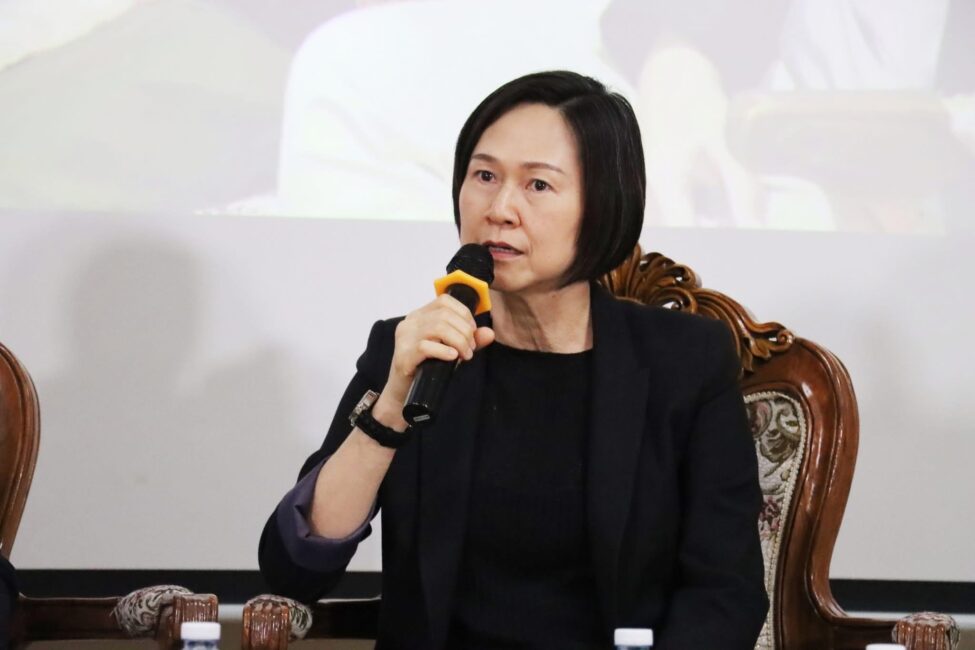
Chutintra Wattanakul, Online News Managing Editor at ThaiPBS, recounted the difficulties in reporting on the Thailand-Cambodia conflict situation in an era where anyone can communicate. Information that is said to be true at one moment can become false within minutes. For example, an official army page provides one piece of information, and the media reports it, then another official page or agency spokesperson says it’s untrue, but on the same day, there’s another correction saying it’s true. This situation confuses media professionals greatly.
She explained that their internal team concluded they cannot report quickly. Besides fake news, there is the issue of a “set of truths”, meaning something is true at this moment, but over time, it might cease to be true because it is refuted by another set of truths or information for some purpose. There was also a difference in the understanding of “coordinates” between the military and the media. There was debate about whether the area damaged by the Cambodians’ attack could be reported.
The military viewed that it should not be disclosed because it would let the Cambodians know the operation was successful, but the mass media wanted to report the impact on local people. Yet after reporting, the public criticized the media for revealing coordinates, asking why they would tell Cambodia, even if the location was only vaguely specified. She had never encountered such phenomena in news work before – having certain social contexts that emerged rapidly and seemed like control over what shouldn’t be done, even though it is truly the duty of the media. Working within that social context required considerable compromise.
“Believe it or not, a while after the ceasefire negotiation, public concerns about coordinates completely disappeared. No one talked about it anymore. It took less than 2 weeks for this issue to disappear. You see, reporting is not just about what we present. As media, we don’t present just facts alone. We also have to consider the social context at that time – what we can and cannot present, and how to present it cautiously,” Chutintra said.
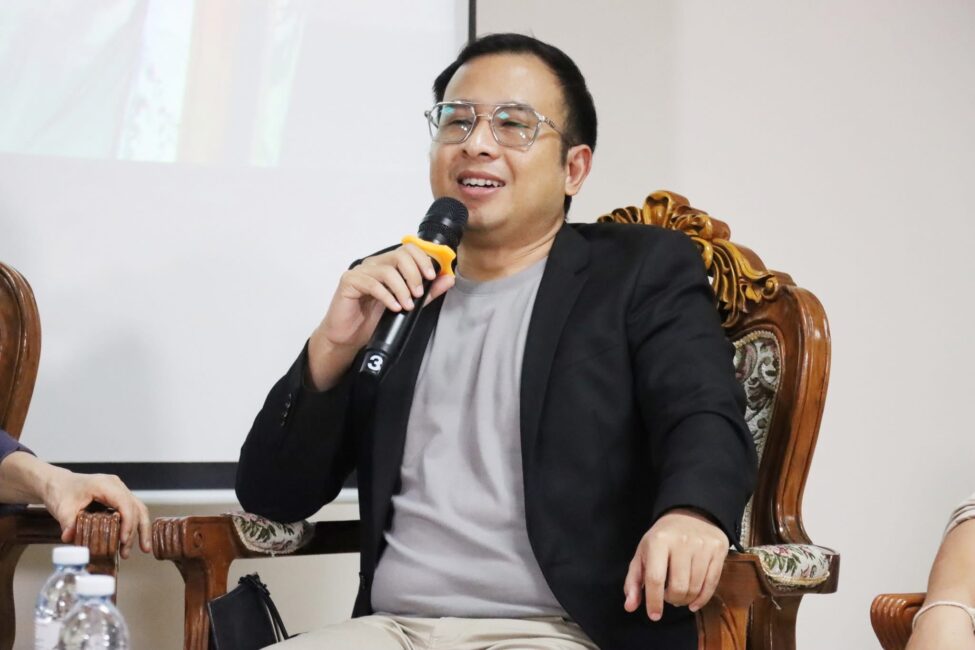
Rawee Tawantharong, Advisor to the Society for Online News Providers (SONP), discussed “Information Advantage (IA)” from a study document titled “ADP 3-13” by the U.S. Army. IA differs from IO (Information Operations). IO only mobilizes forces to support one’s own side and discredits the opponents or competitors, or thinks only in yes or no terms. While IA uses real information, but considers how to use it to reach the desired target groups.
For example, if one wants to communicate a set of information to people who like football, one should start with a story about football, because if one immediately starts with the topic of war, the target audience might not understand. Similarly, if communicating with teachers, one must begin by mentioning the theory. Or if working on social media platforms, one must control the most popular comments (Top Comments) or the first few comments to be positive toward our side, because social media platform users tend to believe this group of comments.
He provided an example from the Thai–Cambodian conflict: when observing the global social current, the world tended to believe Cambodia more than Thailand because “the internet is a space where whoever plants the flag first gains advantage.” The Cambodians communicated first in English, but Thai English communication was still stumbling. When searching the internet with conditions filtering out information from Thai and Cambodian mass media, the search results tended to suggest Thailand was the aggressor against Cambodia, not that Cambodia was attacking Thailand.
“Whoever says communication studies majors are dying, I don’t think so. Communication studies majors – this is the big issue that must build its own identity. But how will communication studies understand other people and understand context, not just being good at using Facebook, Twitter, and TikTok? We must understand what kind of people we’re selling to or selling this information to. With the same information, twist it a little and you can engage students, professors, or reporters,” Rawee said.
Another panel featured 4 speakers discussing “Lessons Learned from Fact-Checking in the Thailand-Cambodia Conflict Case.” Kulthida Samaphutthi, Editorial Staff, Cofact (Thailand) Coalition, noted 3 observations regarding the disinformation phenomenon in the Thailand-Cambodia situation: 1. Use of all methods, from 1.0 such as “blatantly fabricating quotes,” e.g., posting images of Gen. Natthaphon Narkphanit, the Deputy Minister of Defence (at the time), with a message saying Khmers are not relatives, if they are about to die, let them die, which Gen. Natthaphon never said.
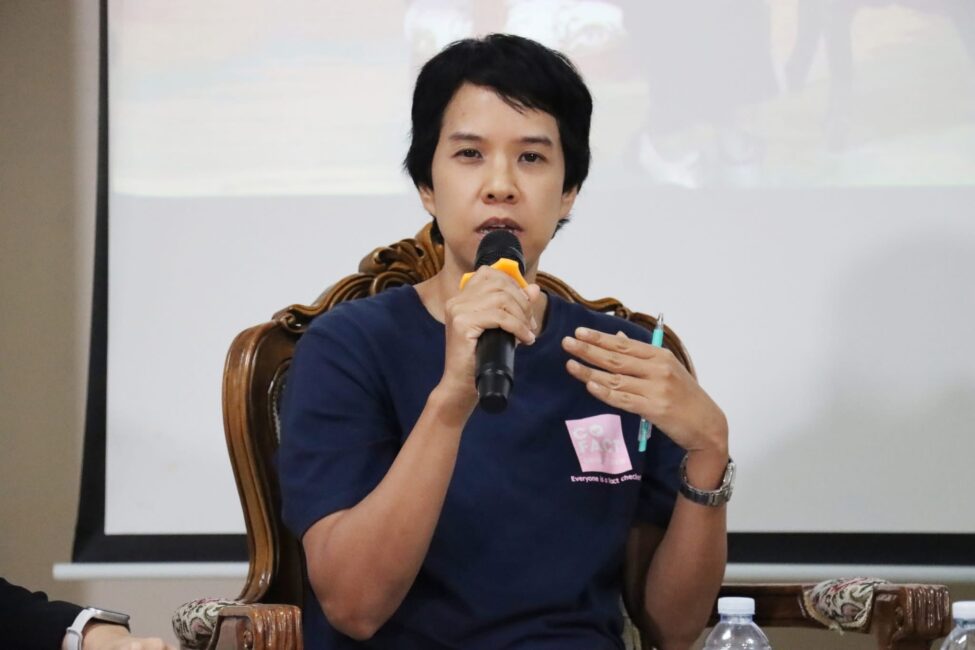
Or, posting an image of Natthaphong Ruengpanyawut, People’s Party leader, with a message condemning hospitals that refuse to treat Cambodian patients. Although the People’s Party had expressed opinions about hospital attitudes toward treating Cambodian patients, they never used those exact words. Other methods included “using unrelated images,” e.g., the Cambodians using an image of an aircraft spraying fire retardant to accuse Thailand of using chemical weapons, or an image of a flock of birds made to look like vultures eating the corpses of Cambodian soldiers. The methods extended to “using AI to create fake images,” such as an image of Phumtham Wechayachai, Deputy Prime Minister (at the time), raising hands in greeting and allowing Hun Sen, former Cambodian PM, to pat his head.
2. Media involvement in spreading false content: For example, the “Kammakorn Kao Kui Nok Jor” (Workers’ News Talk of the Air) program shared information from the Facebook page “Army Military Force – Reserve” claiming Thai forces had seized Preah Vihear Temple, which the Army later denied. Thairath News Show shared a clip from the same page, claiming an 87-year-old Cambodian man was saying goodbye to his family before going to war, but the person who filmed the clip later posted a clarification that the elderly man was just a former soldier in uniform buying medicine at a pharmacy (Thairath News Show has likely deleted this news).
PPTV Television broadcast an image from social media that was shared widely, suggesting Cambodian soldiers were practicing dying, when it was actually a first-aid training before the Thailand-Cambodia border dispute. Even though the news anchor mentioned during the presentation that they were not certain what the facts of the events in the images were, as a media, shouldn’t unclear content not be presented? 3. Some people accept false content if it aligns with their beliefs or thoughts, for example, if it makes enemies look bad.
“Like the vulture news case we checked – the image wasn’t vultures, people said they knew it wasn’t true, but it felt satisfying, good for stirring up Khmer nerves. Or asking why we’d care, saying it was just for fun. Or the fake news that the Fine Arts Department gave the green light to destroy the temple to preserve the territory and sovereignty. The Fine Arts Department never said that, yet people commenting said the content might be false, but agreed with the essence of it, because it’s true that the temple should be destroyed, it is not important, our territory is more important,” Kulthida said.
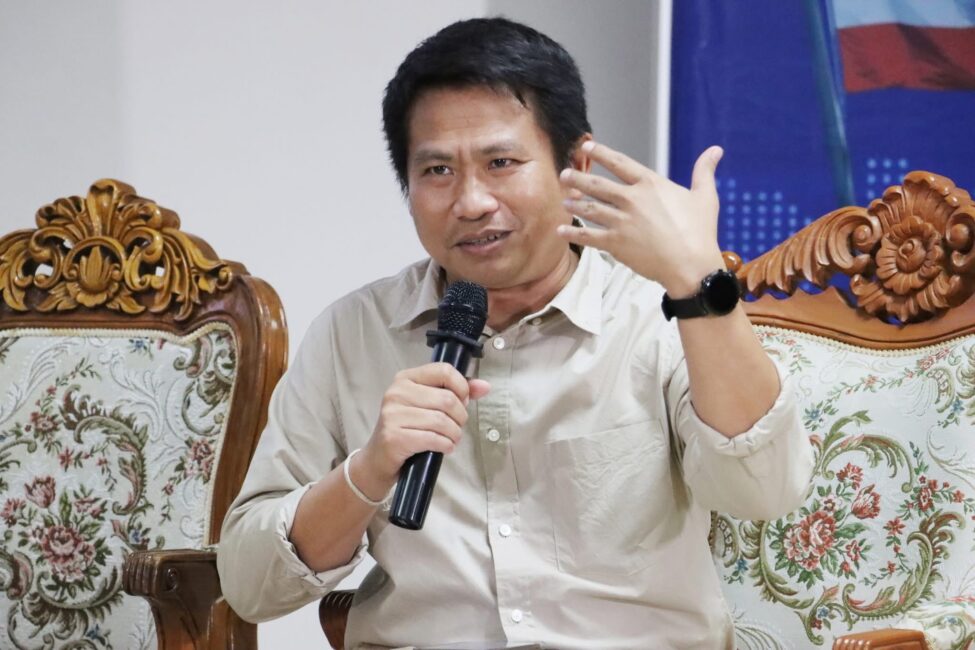
Kamol Homklin, Isan Cofact, said the difficulty in communication is how to ensure people in affected areas are minimally impacted. From talking with local media workers, such as a reporter in Phu Singh District, Sri Sa Ket Province, the response was “I can’t say anything”. If they speak out, reporting the pleas of border residents to stop the shooting, they will face an online backlash. The difficulty is not knowing how to communicate because of a prevailing current of public opinion. However, the local people preparing to evacuate only hoped for the events to end so they could return to farming and their children could return to school.
During the recent period, Isaan Cofact has worked quite hard, but there is a question of whether they have done enough. When events occur, they cannot always report to refute the information. Or, when they encounter news in the area, they cannot make it a national trend because they are a small team with a limited following. They decided that as a small media team, they should not focus on increasing their fame or follower count, but rather on ensuring their communication is as beneficial as possible to the villagers.
“We must let villagers have the right to voice their concerns. For example, when we report on an evacuation site, we must ask about their joys and sorrows, rather than telling our own story. This may not be a trend, but it is the way of life that will benefit them the most”. Kamol said.
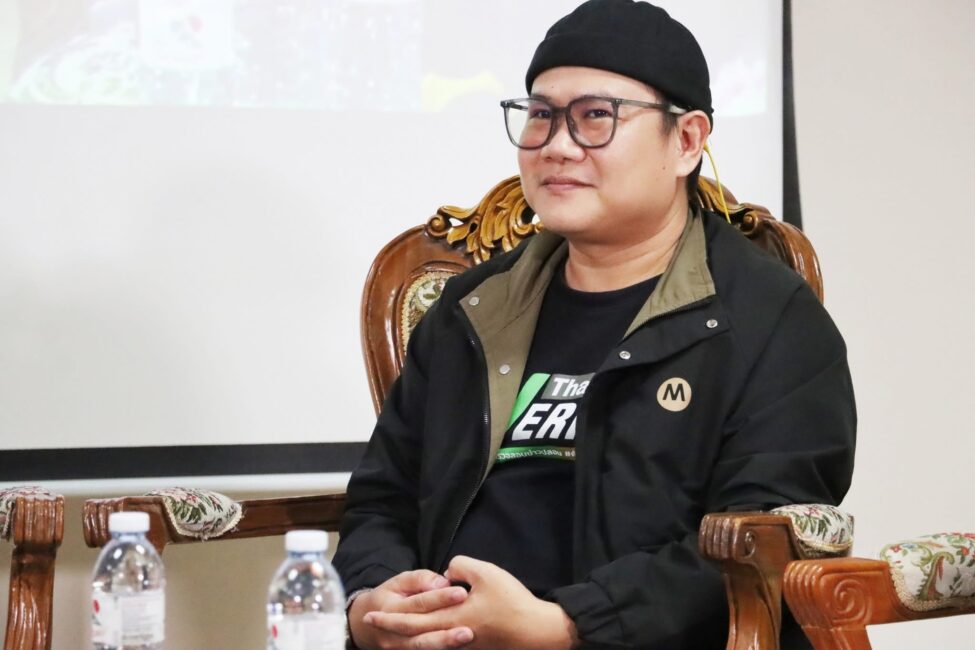
Nuttapol Tumma, Senior Digital Media Content Officer at ThaiPBS, shared that from monitoring the Thailand-Cambodia conflict since June 2025, early news often involved fake images and AI-generated pictures, creating dislike between the two sides. Later, it became clearer online in the form of fake news from the masses on both Thai and Cambodian sides. When clashes occurred, disinformation from both Thai and Cambodian media began to appear.
In the case of Thai media, some were misled into reporting false news because access to information or sources was limited during the clashes, as the military was occupied with its mission. The media mistakenly believed that some pages were presenting images released by the military. The nature of the false news included fake images, fake video clips, or old images and videos irrelevant to the Thai–Cambodian situation. For instance, a recent case involved an old video of a protest in Nepal, falsely claimed to be a protest in Thailand demanding the opening of the border during a Thai-Cambodian GBC (General Border Committee) meeting.
“For verification, we emphasize not following the crowd because we don’t want speed; we want accuracy. We can report slowly, but we can’t report falsely, because letting them go first is like us stepping back 1 step. News saying the 31st Infantry Regiment firing artillery during the night, which was played by many channels, but when checked, it was nighttime combat training clips. We must understand first that during events, everyone wants to be at the front, wants to be closest to events, wants to share, but don’t forget that these things, if we share wrongly, especially as media, we’ll be doubly impacted. Credibility is very important for the media,” Nuttapol said.
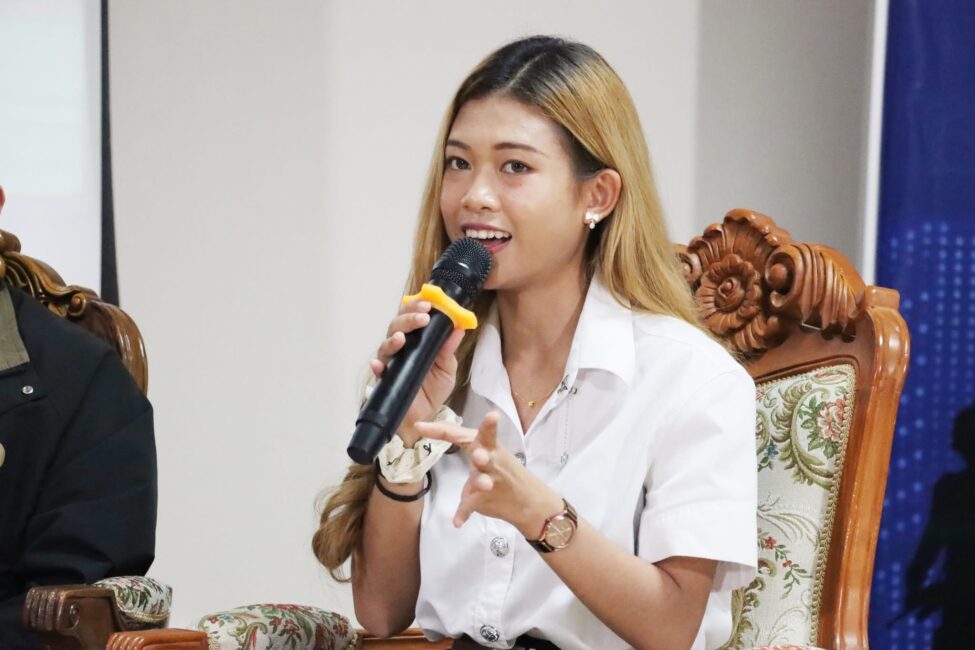
Suchanat Intapin, 3rd-year Communication Arts student at the Faculty of Humanities and Social Sciences, Burapha University, said that news likely to be misinformation often has clickbait headlines. The articles, upon clicking, cite unknown sources, and the news does not appear on major Thai or international media outlets. She concluded that children of this generation need strong encouragement for Media Literacy skills.
Or news posts with people pasting reference links in comment sections, which might be links to websites reporting either real news or fake news. So she recommended everyone to memorize the URLs of trustworthy news agencies. Do not click the URLs with strange names or strange numbers. Before clicking anything, observe whether the URL name is really a news agency, including checking from multiple news agencies or information sources, and whether the reports match.
“At a minimum, we’ll look for at least 2 sources. If we see something on Social Media, we’ll start finding information, searching websites to determine whether this story is true. Which agencies reported it? Or does anyone else talk about anything related? What do Comments say? At minimum, 2 sources to be sure this looks real,” Suchanat said.
